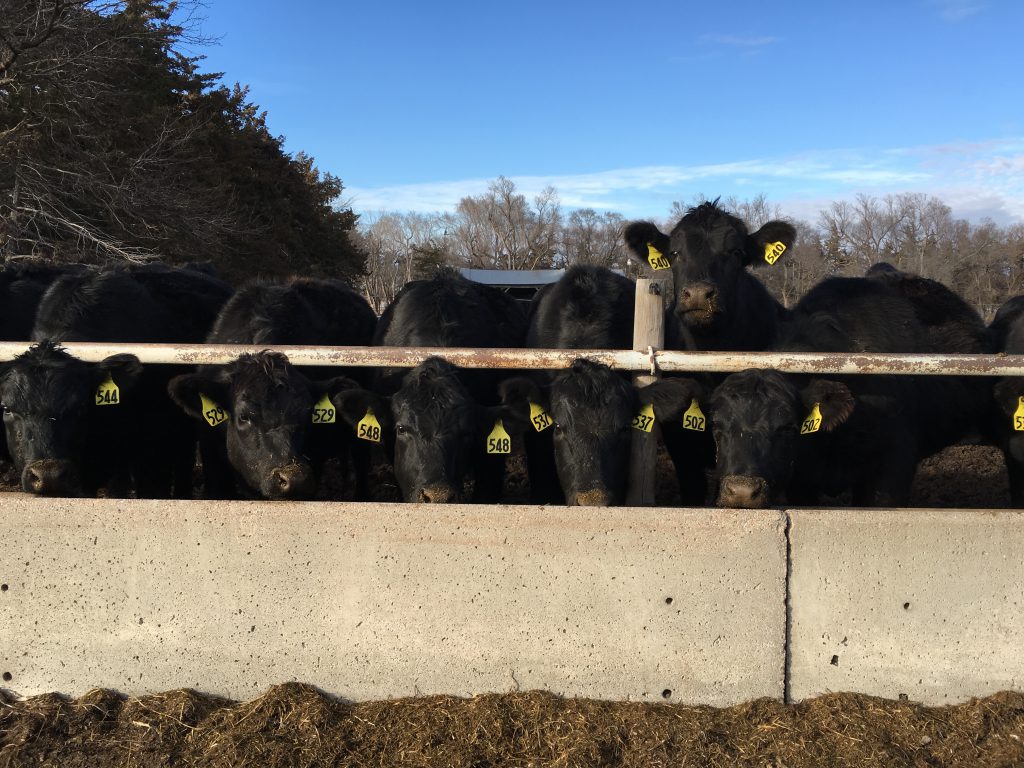
As the days get warmer and we start to look for signs of heat exhaustion in cattle, producers need to be aware of employee safety as well. In most recent data from UNMC’s Central States Center for Ag Safety and Health (CS-CASH), the occupational fatality rate for workers in the cattle industry is 116 for every 100,000, which is four times higher than the average for all agricultural sectors combined. As producers in the beef cattle feedlot industry increase technologies for production, technology and safety gear for workers should also stay up to date with regulations and recommendations. Feedlot workers alone also have a four times higher average than the national average for days away from work due to illness or injury that is work related.
Beef Feedlot Safety Tips
Beat the heat this summer with four tips from the University of Nebraska Medical Center, which will help avoid heat exhaustion or heatstroke. They say to drink 16 oz. of water before working outside, drink water every 15 minutes, drink a quart of water every hour and take rest breaks in a shaded or air conditioned area.

Shade can offer not only heat protection for animals, but also for workers
Not only is heat a problem this time of year for workers and cattle, but there are many other common safety issues on the farm. CS-CASH, which is partnered with the UNMC College of Public Health, identified common safety topics for feedlots in the Midwest, based on survey responses from producers in the area. With this data, CS-CASH is creating a toolbox of resources for producers in specific regions to help with employee training and injury prevention. Some of the results they found can be summarized in to the take-away points below:
- 26% of injuries on the operation are livestock related, and 24% are machinery related.
- The average cost per injury for medical expenses was $8,795 for the producer, not including lost labor or productivity due to the illness or injury.
- Missouri had the lowest of the seven state region at a 5.6% injury rate for employees, and North Dakota had the highest at 8.5%.
University of Nebraska-Lincoln features a video from Dr. Aaron Yoder that explains how to develop a safety plan for your feedlot, when to implement changes, what should be included for safety, and any details and resources that can help customize your plan.
The Feedlot Fifteen
The organization also created the “Feedlot 15” which highlights the top 15 areas of concern for producers when it comes to feedlot safety. The top five of these key safety issues are:
- Feed mill safety
- Mobile equipment such as ATV’s
- Tractors and loaders
- Stockmanship
- Cattle handling
The whole list can be found at the CS-CASH website to provide a guideline for new training programs that focus on safety and decreasing hazards. Including the top five concerns, most of the Feedlot Fifteen concerns can be prevented through active employee training programs and safety seminars, which are also highlighted on the CS-CASH website.
Value of Safety
Why is worker safety important to having a productive and efficient facility? The Ag Safety and Health Council of America estimated that for every $1.00 invested in training for employees on the workplace, the producer will see a return of $4.00 to $6.00 back through less injuries, illness, worker’s compensation, labor loss and OSHA fines. The best part is that this safety investment also increases worker retention and education, making it worthwhile for the employee as well. With organizations such as OSHA, resources to help train feedlot workers are more accessible than ever before.
Reducing work-related injuries throughout your operation can help with retaining a skilled workforce and improving your operation’s sustainability. Along with information for workplace training, CS-CASH also has bilingual resources available for Spanish-speaking employees to ensure their safety and knowledge of workplace dangers. More resources are available at the CS-CASH website or the Progressive Cattlemen’s website, which hold many specific articles related to work injuries and safety.
